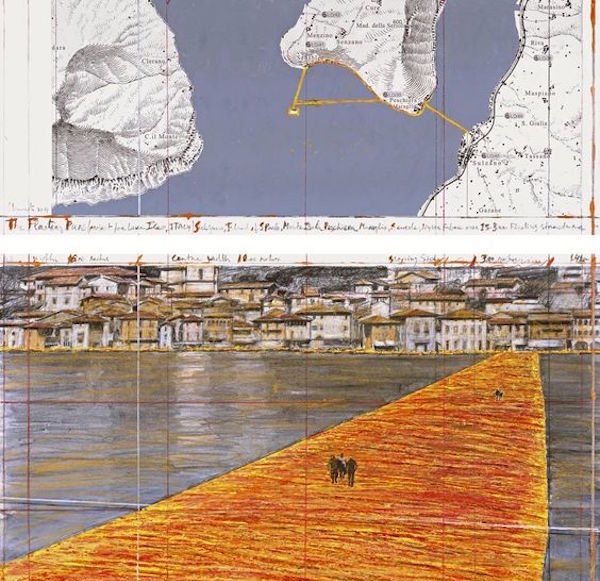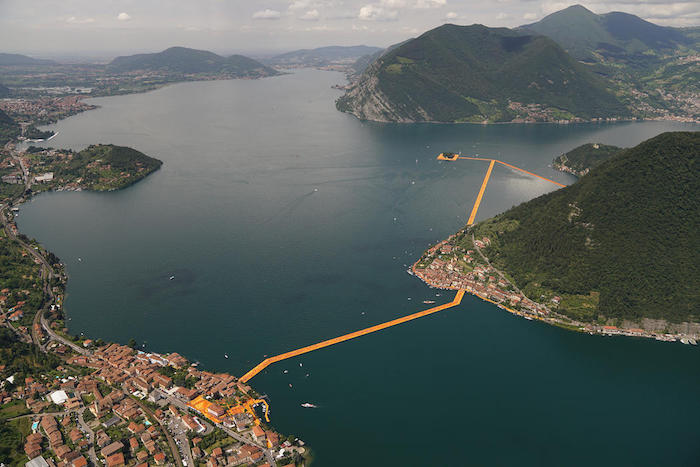
This weekend, a large-scale project on Italy’s Lake Iseo connected two islands to each other and to the mainland. The project is not a bridge, tunnel, or other infrastructure, but a temporary art installation by the conceptual and environmental artist Christo.

Christo, with his late wife and collaborator, Jeanne-Claude, is known for environmental artworks. The 24-mile Running Fence in California (1976), the wrapping of the Pont Neuf in Paris (1985) and the Reichstag in Berlin (1995), and The Gates in New York City (2005) are among their most significant works.
Christo and Jeanne-Claude’s projects are characteristically large and complex, taking years and even decades to be realized. The Floating Piers is based on an idea the duo first conceived for another site in 1970.
“I know these projects are totally irrational, totally useless. The world can live without them, nobody needs them, only me and Jeanne-Claude. She always made the point that they exist because we like to have them, and if others like them, it’s only a bonus.”

On Lake Iseo in Italy’s Lombardy region, The Floating Piers allows visitors the chance to walk on water. A three-kilometer floating fabric walkway connects the lakeside town of Sulzano to the islands of Monte Isola and San Paolo, completely encircling the latter, which is owned by the aristocratic Beretta family.

Some 70,000 square meters of yellow nylon fabric float on a system of 220,000 polyethylene cubes, which are anchored by 190 5-ton blocks. The walkway sits just above water level and undulates with the movement of the lake underneath. The shimmering yellow fabric changes color when wet, in bold contrast to the lake and surrounding mountains.

The Floating Piers is Christo’s first outdoor installation since 2005. The €15 million project is funded, like all of Christo’s projects, through the sale of his original drawings and sketches. After the 16-day exhibition, the piers will be removed and the materials will be recycled.

The project is free to the public and open 24 hours a day, weather permitting. The Floating Piers opened on June 18 and continues through July 3, 2016.
“The important part of this project is the temporary part, the nomadic quality. The work needs to be gone, because I do not own the work, no one does. This is why it is free.”